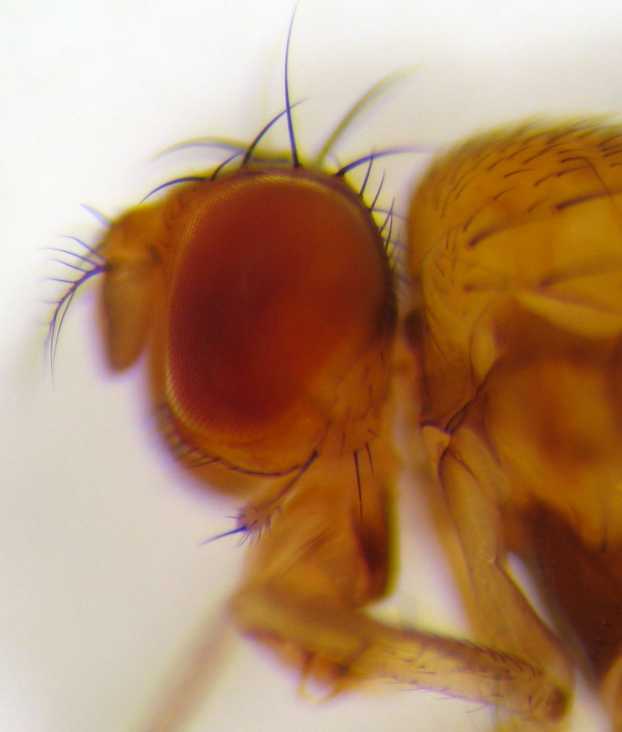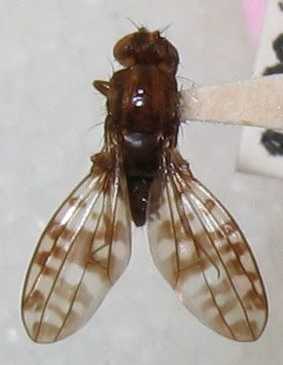|
RNA-induced Silencing Complex
The RNA-induced silencing complex, or RISC, is a multiprotein complex, specifically a ribonucleoprotein, which functions in gene silencing via a variety of pathways at the transcriptional and translational levels. Using single-stranded RNA (ssRNA) fragments, such as microRNA (miRNA), or double-stranded small interfering RNA (siRNA), the complex functions as a key tool in gene regulation. The single strand of RNA acts as a template for RISC to recognize complementary DNA, complementary messenger RNA (mRNA) transcription (genetics), transcript. Once found, one of the proteins in RISC, Argonaute, activates and cleaves the mRNA. This process is called RNA interference (RNAi) and it is found in many eukaryotes; it is a key process in defense against viral disease, viral infections, as it is triggered by the presence of double-stranded RNA (dsRNA). Discovery The biochemistry, biochemical identification of RISC was conducted by Gregory Hannon and his colleagues at the Cold Spring Harbor ... [...More Info...] [...Related Items...] OR: [Wikipedia] [Google] [Baidu] |
Multiprotein Complex
A protein complex or multiprotein complex is a group of two or more associated polypeptide chains. Protein complexes are distinct from multidomain enzymes, in which multiple catalytic domains are found in a single polypeptide chain. Protein complexes are a form of quaternary structure. Proteins in a protein complex are linked by non-covalent protein–protein interactions. These complexes are a cornerstone of many (if not most) biological processes. The cell is seen to be composed of modular supramolecular complexes, each of which performs an independent, discrete biological function. Through proximity, the speed and selectivity of binding interactions between enzymatic complex and substrates can be vastly improved, leading to higher cellular efficiency. Many of the techniques used to enter cells and isolate proteins are inherently disruptive to such large complexes, complicating the task of determining the components of a complex. Examples of protein complexes include the ... [...More Info...] [...Related Items...] OR: [Wikipedia] [Google] [Baidu] |
Cold Spring Harbor Laboratory
Cold Spring Harbor Laboratory (CSHL) is a private, non-profit institution with research programs focusing on cancer, neuroscience, botany, genomics, and quantitative biology. It is located in Laurel Hollow, New York, in Nassau County, on Long Island. It is one of 68 institutions supported by the Cancer Centers Program of the U.S. National Cancer Institute (NCI) and has been an NCI-designated Cancer Center since 1987. The Laboratory is one of a handful of institutions that played a central role in the development of molecular genetics and molecular biology. It has been home to eight scientists who have been awarded the Nobel Prize in Physiology or Medicine. CSHL is ranked among the leading basic research institutions in molecular biology and genetics, with Thomson Reuters ranking it first in the world. CSHL was also ranked first in research output worldwide by ''Nature''. The Laboratory is led by Bruce Stillman, a biochemist and cancer researcher. Since its incepti ... [...More Info...] [...Related Items...] OR: [Wikipedia] [Google] [Baidu] |
Cyclin E
Cyclin E is a member of the cyclin family. Cyclin E binds to G1 phase Cdk2, which is required for the transition from G1 to S phase of the cell cycle that determines initiation of DNA duplication. The Cyclin E/CDK2 complex phosphorylates p27Kip1 (an inhibitor of Cyclin D), tagging it for degradation, thus promoting expression of Cyclin A, allowing progression to S phase. Functions of Cyclin E Like all cyclin family members, cyclin E forms complexes with cyclin-dependent kinases. In particular, Cyclin E binds with CDK2. Cyclin E/CDK2 regulates multiple cellular processes by phosphorylating numerous downstream proteins. Cyclin E/CDK2 plays a critical role in the G1 phase and in the G1-S phase transition In physics, chemistry, and other related fields like biology, a phase transition (or phase change) is the physical process of transition between one state of a medium and another. Commonly the term is used to refer to changes among the basic Sta .... Cyclin E/CDK2 phosphor ... [...More Info...] [...Related Items...] OR: [Wikipedia] [Google] [Baidu] |
Complementarity (molecular Biology)
In molecular biology, complementarity describes a relationship between two structures each following the lock-and-key principle. In nature complementarity is the base principle of DNA replication and transcription as it is a property shared between two DNA or RNA sequences, such that when they are aligned antiparallel to each other, the nucleotide bases at each position in the sequences will be complementary, much like looking in the mirror and seeing the reverse of things. This complementary base pairing allows cells to copy information from one generation to another and even find and repair damage to the information stored in the sequences. The degree of complementarity between two nucleic acid strands may vary, from complete complementarity (each nucleotide is across from its opposite) to no complementarity (each nucleotide is not across from its opposite) and determines the stability of the sequences to be together. Furthermore, various DNA repair functions as well as ... [...More Info...] [...Related Items...] OR: [Wikipedia] [Google] [Baidu] |
β-galactosidase
β-Galactosidase (EC 3.2.1.23, beta-gal or β-gal; systematic name β-D-galactoside galactohydrolase) is a glycoside hydrolase enzyme that catalyzes hydrolysis of terminal non-reducing β-D-galactose residues in β-D-galactosides. (This enzyme digests many β-Galactosides, not just lactose. It is sometimes loosely referred to as lactase but that name is generally reserved for mammalian digestive enzymes that breaks down lactose specifically.) β-Galactosides include carbohydrates containing galactose where the glycosidic bond lies above the galactose molecule. Substrates of different β-galactosidases include ganglioside GM1, lactosylceramides, lactose, and various glycoproteins. Function β-Galactosidase is an exoglycosidase which hydrolyzes the β- glycosidic bond formed between a galactose and its organic moiety. It may also cleave fucosides and arabinosides but at a much lower rate. It is an essential enzyme in the human body. Deficiencies in the protein can ... [...More Info...] [...Related Items...] OR: [Wikipedia] [Google] [Baidu] |
Gene Expression
Gene expression is the process (including its Regulation of gene expression, regulation) by which information from a gene is used in the synthesis of a functional gene product that enables it to produce end products, proteins or non-coding RNA, and ultimately affect a phenotype. These products are often proteins, but in non-protein-coding genes such as Transfer RNA, transfer RNA (tRNA) and Small nuclear RNA, small nuclear RNA (snRNA), the product is a functional List of RNAs, non-coding RNA. The process of gene expression is used by all known life—eukaryotes (including multicellular organisms), prokaryotes (bacteria and archaea), and viruses—to generate the macromolecule, macromolecular machinery for life. In genetics, gene expression is the most fundamental level at which the genotype gives rise to the phenotype, ''i.e.'' observable trait. The genetic information stored in DNA represents the genotype, whereas the phenotype results from the "interpretation" of that informati ... [...More Info...] [...Related Items...] OR: [Wikipedia] [Google] [Baidu] |
Expression Vector
An expression vector, otherwise known as an expression construct, is usually a plasmid or virus designed for gene expression in cells. The vector (molecular biology), vector is used to introduce a specific gene into a target cell, and can commandeer the cell's mechanism for protein synthesis to produce the protein Genetic code, encoded by the gene. Expression vectors are the basic tools in biotechnology for the protein production, production of proteins. The Vector (molecular biology), vector is engineered to contain regulatory sequences that act as Enhancer (genetics), enhancer and Promoter (biology), promoter regions and lead to efficient transcription of the gene carried on the expression vector. The goal of a well-designed expression vector is the efficient production of protein, and this may be achieved by the production of significant amount of stable messenger RNA, which can then be Translation (biology), translated into protein. The expression of a protein may be tightly ... [...More Info...] [...Related Items...] OR: [Wikipedia] [Google] [Baidu] |
Transfection
Transfection is the process of deliberately introducing naked or purified nucleic acids into eukaryotic cells. It may also refer to other methods and cell types, although other terms are often preferred: " transformation" is typically used to describe non-viral DNA transfer in bacteria and non-animal eukaryotic cells, including plant cells. In animal cells, transfection is the preferred term, as the term "transformation" is also used to refer to a cell's progression to a cancerous state (carcinogenesis). Transduction is often used to describe virus-mediated gene transfer into prokaryotic cells. The word ''transfection'' is a portmanteau of the prefix ''trans-'' and the word "infection." Genetic material (such as supercoiled plasmid DNA or siRNA constructs), may be transfected. Transfection of animal cells typically involves opening transient pores or "holes" in the cell membrane to allow the uptake of material. Transfection can be carried out using calcium phosphate (i.e. ... [...More Info...] [...Related Items...] OR: [Wikipedia] [Google] [Baidu] |
Schneider 2 Cells
Schneider 2 cells, usually abbreviated as S2 cells, are one of the most commonly used ''Drosophila melanogaster'' cell lines. S2 cells were derived from a primary culture of late stage (20–24 hours old) ''Drosophila melanogaster'' embryos by Dr. Imogene Schneider, likely from a macrophage-like lineage. S2 cells can be grown at room temperature both as a semi-adherent monolayer or in suspension, and they can be grown in the absence of serum. Several media have been developed for culturing insect cell lines with many of them suitable for culturing S2 cells. The S2 cells have been shown to grow up to 5.1×107 cells/ml in serum free medium and above 107 cells/ml in basal media such as that used in Schneider's experiments. ExpreS2ion Biotechnologies have shown a cell concentration of up 7.0x107 cell/ml. S2 cells are often used for expression of heterologous proteins and can be used for large-scale production of proteins. Additionally, the cells can be easily transiently transfected ... [...More Info...] [...Related Items...] OR: [Wikipedia] [Google] [Baidu] |
Drosophila
''Drosophila'' (), from Ancient Greek δρόσος (''drósos''), meaning "dew", and φίλος (''phílos''), meaning "loving", is a genus of fly, belonging to the family Drosophilidae, whose members are often called "small fruit flies" or pomace flies, vinegar flies, or wine flies, a reference to the characteristic of many species to linger around overripe or rotting fruit. They should not be confused with the Tephritidae, a related family, which are also called fruit flies (sometimes referred to as "true fruit flies"); tephritids feed primarily on unripe or ripe fruit, with many species being regarded as destructive agricultural pests, especially the Mediterranean fruit fly. One species of ''Drosophila'' in particular, ''Drosophila melanogaster'', has been heavily used in research in genetics and is a common model organism in developmental biology. The terms "fruit fly" and "''Drosophila''" are often used synonymously with ''D. melanogaster'' in modern biological literatur ... [...More Info...] [...Related Items...] OR: [Wikipedia] [Google] [Baidu] |
Drosophila Melanogaster - Side (aka)
''Drosophila'' (), from Ancient Greek δρόσος (''drósos''), meaning "dew", and φίλος (''phílos''), meaning "loving", is a genus of fly, belonging to the family Drosophilidae, whose members are often called "small fruit flies" or pomace flies, vinegar flies, or wine flies, a reference to the characteristic of many species to linger around overripe or rotting fruit. They should not be confused with the Tephritidae, a related family, which are also called fruit flies (sometimes referred to as "true fruit flies"); tephritids feed primarily on unripe or ripe fruit, with many species being regarded as destructive agricultural pests, especially the Mediterranean fruit fly. One species of ''Drosophila'' in particular, '' Drosophila melanogaster'', has been heavily used in research in genetics and is a common model organism in developmental biology. The terms "fruit fly" and "''Drosophila''" are often used synonymously with ''D. melanogaster'' in modern biological litera ... [...More Info...] [...Related Items...] OR: [Wikipedia] [Google] [Baidu] |





